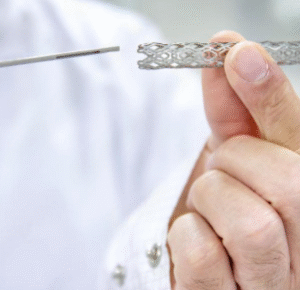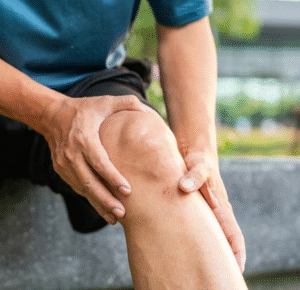Minimally invasive surgery has revolutionized the medical field, offering patients quicker recovery times and fewer complications. I’ve always been fascinated by how these techniques have evolved, transforming what was once a daunting experience into a more manageable one. From laparoscopic procedures to robotic-assisted surgeries, the advancements are nothing short of remarkable.
In this article, I’ll delve into some of the most innovative approaches currently shaping minimally invasive surgery. These cutting-edge techniques not only enhance precision but also improve patient outcomes.
Whether you’re a medical professional or just curious about the latest in healthcare, you’ll find these innovations both intriguing and inspiring. For more insights on how technology is transforming healthcare, visit HexisCyber, where you can explore the intersection of medical innovation and cybersecurity.
Understanding Minimally Invasive Surgery
Minimally invasive surgery (MIS) involves techniques that reduce injury to the body compared to traditional open surgery. Surgeons make small incisions, typically 0.5 to 1.5 cm, to insert specialized instruments. With these tools, both diagnostic and therapeutic procedures become possible without the need for large incisions.
MIS offers several advantages to patients. Recovery times are faster, reducing hospital stays to a minimum. Patients typically experience less pain post-operatively, needing fewer pain medications. There’s also a decreased risk of infections and complications due to smaller surgical wounds.
Laparoscopy and endoscopy are common types of MIS techniques. In laparoscopy, surgeons use a laparoscope—a thin tube with a camera—to view the inside of the abdomen. This method is widely used for gallbladder removal, hernia repair, and bariatric surgery. Endoscopy involves a similar process but is primarily used to examine the gastrointestinal tract. Both procedures enhance visibility and precision, improving surgical outcomes.
Innovative technologies further augment these benefits. For instance, robotic-assisted surgery provides surgeons with enhanced dexterity and control. Robots like the da Vinci Surgical System enable precise movements that would be difficult to achieve manually. This technology is especially beneficial in complex procedures like prostate surgeries and cardiac valve repairs.
Understanding minimally invasive surgery means recognizing its impact not only on patient outcomes but also on the evolution of surgical practices. As technology advances, these methods will likely become the standard in various medical fields, offering patients safer and more effective treatment options.
Evolution of Minimally Invasive Techniques
Minimally invasive surgery (MIS) has come a long way from its inception. It has undergone significant advancements leading to improved patient outcomes and surgical efficiency.
Early Techniques
Early MIS techniques centered around the use of endoscopes and laparoscopes. Surgeons made small incisions to insert these specialized instruments, gaining visibility inside the body without large openings. In the 1980s, laparoscopy became a game-changer for gallbladder removal (cholecystectomy). Initial challenges included limited instrument dexterity and visibility. However, the advantages of reduced recovery time, less pain, and fewer complications drove rapid adoption in the medical community.
Recent Developments
Recent advancements in MIS focus on enhancing precision and minimizing patient trauma. Robotic-assisted surgery is a prime example. Systems like the da Vinci Surgical System provide surgeons with enhanced control and precision, useful for complex procedures like prostatectomies. Innovations in imaging technologies, such as 3D visualization and augmented reality, allow for better planning and execution of surgical procedures. Other developments include the use of miniaturized instruments and bio-compatible materials, reducing the invasiveness and improving recovery times. These technological advancements continue to shape the future of MIS, making surgeries safer and more effective.
Robotic-Assisted Surgery
Robotic-assisted surgery elevates minimally invasive techniques by providing greater precision. Surgeons use advanced robotic systems to perform complex procedures with enhanced control.
Advantages
Robotic systems enhance surgical precision. They offer improved dexterity through articulated instruments, reducing human error. Systems like the da Vinci Surgical System allow for better visualization using 3D-HD technology, providing a clearer view of the surgical site. These improvements translate into smaller incisions, less blood loss, and quicker recovery times for patients. For example, in prostatectomies, robotic-assisted techniques have shown to minimize complications and expedite patient recovery, according to studies in medical journals.
Limitations
High cost remains a significant barrier. Robotic systems require substantial investment, making them less accessible in some healthcare settings. Maintenance and training also contribute to ongoing expenses. Additionally, there is a steep learning curve for surgeons. While robotic-assisted surgery offers many benefits, it demands extensive training to achieve proficiency, as noted in reports by healthcare institutions.
Laparoscopic Surgery Innovations
Surgeons have made considerable progress in laparoscopic surgery, integrating advanced tools and enhanced visualization techniques to improve precision and outcomes.
Advanced Tools
The introduction of advanced tools has significantly impacted laparoscopic surgery. One major breakthrough is the use of energy devices, such as ultrasonic scalpels and advanced bipolar devices, which allow for precise cutting and coagulation with minimal thermal spread. Additionally, articulating instruments provide surgeons with greater flexibility, mimicking the natural movements of the human hand to navigate complex anatomical structures. Surgical staplers have also evolved, offering more reliable and consistent performance in tissue approximation and transection.
Enhanced Visualization
Enhanced visualization techniques have revolutionized laparoscopic procedures. High-definition (HD) cameras provide crystal-clear images, making it easier for surgeons to identify critical structures and avoid complications. 3D visualization further enhances depth perception, allowing for more precise manipulation of tissues and instruments. Fluorescence imaging, using dyes like indocyanine green (ICG), highlights specific tissues such as blood vessels and bile ducts, aiding in more accurate dissections and reducing intraoperative risks.
These advancements in laparoscopic surgery tools and visualization techniques continue to push the boundaries of minimally invasive surgery, improving patient outcomes and expanding the scope of procedures that can be performed using these methods.
Natural Orifice Translumenal Endoscopic Surgery (NOTES)
Natural Orifice Translumenal Endoscopic Surgery (NOTES) represents a groundbreaking approach in minimally invasive surgery. NOTES further reduces patient trauma by using natural orifices for surgical entry.
Methodology
NOTES involves accessing the surgical site through natural orifices like the mouth, vagina, or rectum. Surgeons perform procedures such as cholecystectomies or appendectomies without external incisions. Devices like flexible endoscopes and specialized tools allow for these innovative procedures. This method leverages existing endoscopic equipment with advancements in flexible instruments to navigate internal pathways.
Benefits
NOTES offers substantial advantages. Patients experience reduced postoperative pain and no visible scarring. Recovery times are shorter, enhancing overall patient satisfaction. For instance, internal healing accelerates as trauma from incisions is eliminated. Additionally, infection risks decrease since external cuts are avoided, contributing to better outcomes.
By leveraging these methodologies and benefits, NOTES significantly improves the scope and effectiveness of minimally invasive surgery.
Future Trends in Minimally Invasive Surgery
Advancements in Artificial Intelligence (AI) and Machine Learning (ML) are set to revolutionize minimally invasive surgery (MIS). AI algorithms provide real-time data analysis, aiding surgeons in decision-making and enhancing procedural accuracy. For instance, ML models can identify and differentiate between tissue types, enabling precise dissections.
Robotic platforms continue to evolve. Next-generation systems like the Versius robotic arm emphasize modularity and flexibility, making surgeries more efficient. These systems offer improved ergonomics and haptic feedback, which enhance surgeon control and patient safety.
Augmented Reality (AR) integration provides surgeons with superimposed anatomical information during procedures. This technology minimizes risks by offering real-time visualization of critical structures. For example, AR can overlay a 3D model of a patient’s anatomy onto the surgical field, ensuring precise navigation.
Tele-surgery enables surgeons to perform procedures remotely, using advanced robotic systems. This approach expands access to specialized surgical care regardless of geographical constraints and permits expert consultations in real-time.
Miniaturization of instruments continues. Researchers are developing nano-scaled surgical tools to access and operate on even the smallest anatomical structures. These instruments reduce tissue damage and further minimize recovery times.
Gene-editing technologies like CRISPR are beginning to intersect with MIS. CRISPR allows for precise genetic modifications during surgical procedures, aiming to correct gene mutations and treat conditions at the genetic level.
Persistent innovation in MIS focuses on reducing patient trauma, enhancing precision, and improving recovery outcomes. Each technological breakthrough propels the field closer to achieving safer and more efficient surgical solutions.




